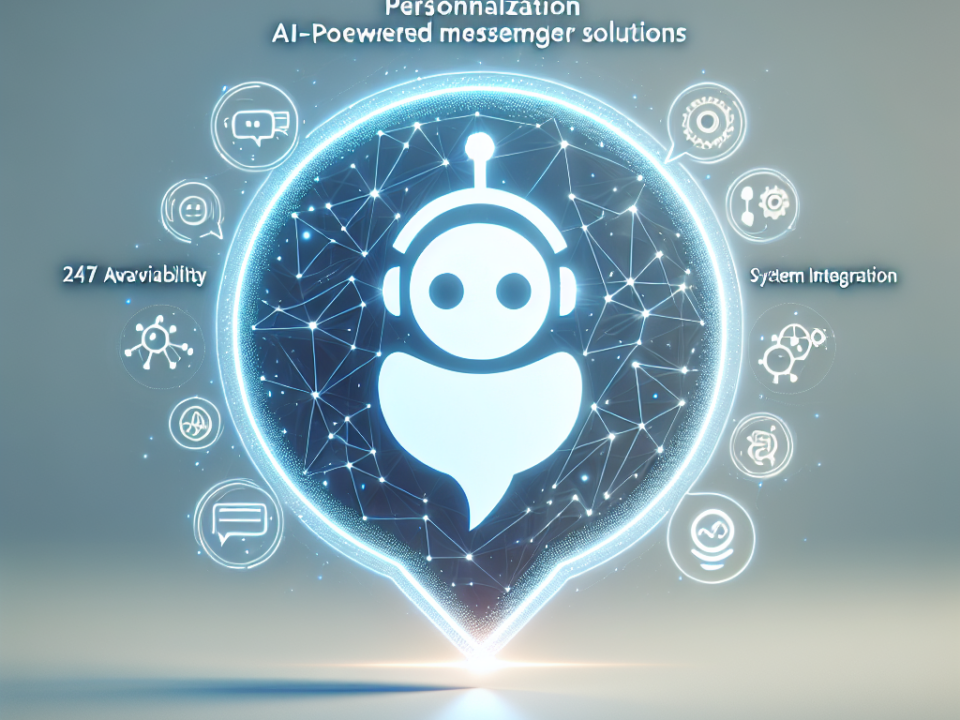
Integrating Messaging APIs into Business Workflows: Recent Improvements and Strategies
December 16, 2024
Advancements in Personalization to Increase Sales and Boost Efficiency
December 29, 2024In today’s dynamic business environment, AI messenger solutions for customer interaction are transforming how companies engage with customers. From improving service efficiency to boosting sales, the potential of AI-powered platforms is significant. Let’s explore real-world implementations and top best practices to guide your success.
Real-World Examples of AI Messenger Solutions
1. Sephora
Implementation: Sephora’s Virtual Artist chatbot on Facebook Messenger helps users with product searches, appointment scheduling, and even virtual makeup try-ons.
Outcome: This AI messenger solution increased product exposure and sales through personalized recommendations, significantly improving the customer experience.
2. H&M
Implementation: H&M’s AI chatbot assists users in browsing the store and offers personalized fashion suggestions.
Outcome: As a result, customer satisfaction improved, and online sales saw notable growth due to a smoother, more tailored shopping experience.
3. Kahoot!
Implementation: Kahoot! uses AI-driven chatbots to support users and enhance real-time interactive learning experiences.
Outcome: The platform reported faster response times and increased engagement in educational sessions.
Tips for Successfully Implementing AI Messenger Solutions
-
Define Clear Objectives
Before implementation, clarify whether your goals are customer service enhancement, increased sales, or both. A focused objective ensures measurable success. -
Choose the Right Platform
Select a platform that integrates with your CRM, supports analytics, and offers multilingual functionality. The right fit will streamline your operations. -
Personalization is Key
Use AI to tailor conversations based on customer preferences, browsing history, and purchase data. Personalized messaging drives satisfaction and loyalty. -
Continuous Training and Improvement
Allow your chatbot to learn from interactions. Use feedback and performance data to retrain and improve the system regularly. -
Human Backup When Needed
Ensure that customers can escalate to a live agent if necessary. This hybrid model maintains satisfaction while increasing efficiency. -
Analytics and Monitoring
Monitor chatbot performance closely. Use insights to refine responses, understand customer needs, and improve engagement strategies. -
Team Training Resources
Train staff to support and manage AI tools. Consider platforms like Udemy, Coursera, or in-house workshops for continual learning. -
Regular Updates and Maintenance
Keep your AI system current. Update its training data and knowledge base to align with changing customer behavior and language trends.
Best Practices to Improve Sales and Service Interactions
-
Multi-Channel Integration
Ensure your AI chatbot works across your website, apps, and social platforms. This unified experience builds trust and improves retention. -
Leverage Customer Insights
Use data from AI interactions to guide marketing strategy and enhance future engagements. According to McKinsey, companies leading in customer insights see 1.5x more revenue growth. -
Encourage Feedback
Prompt users to provide feedback about their chatbot experience. Use this loop to enhance AI performance and customer satisfaction. -
A/B Testing of Conversation Flows
Test different messaging strategies to see what works best. A data-driven approach allows for ongoing optimization of user experiences.
Conclusion
AI messenger solutions for customer interaction are reshaping how companies deliver service and drive sales. By learning from real-world examples, setting clear goals, and adopting proven best practices, businesses can maximize ROI and customer satisfaction. Continuous training, feedback, and improvement ensure long-term success in this AI-enhanced era.
References
- https://shorter.me/nFV4d
- https://shorter.me/ZnD0k
- https://shorter.me/HmTPz
- Rane N. Choudhary S. Rane J. (2023). Hyper-personalization for enhancing customer loyalty and satisfaction in Customer Relationship Management (CRM) systems. http://dx.doi.org/10.2139/ssrn.4641044.
- Mittal, B. and W.M. Lassar, (1996). The role of personalization in service encounters. Journal of Retailing. 72(1): p. 95-109.


